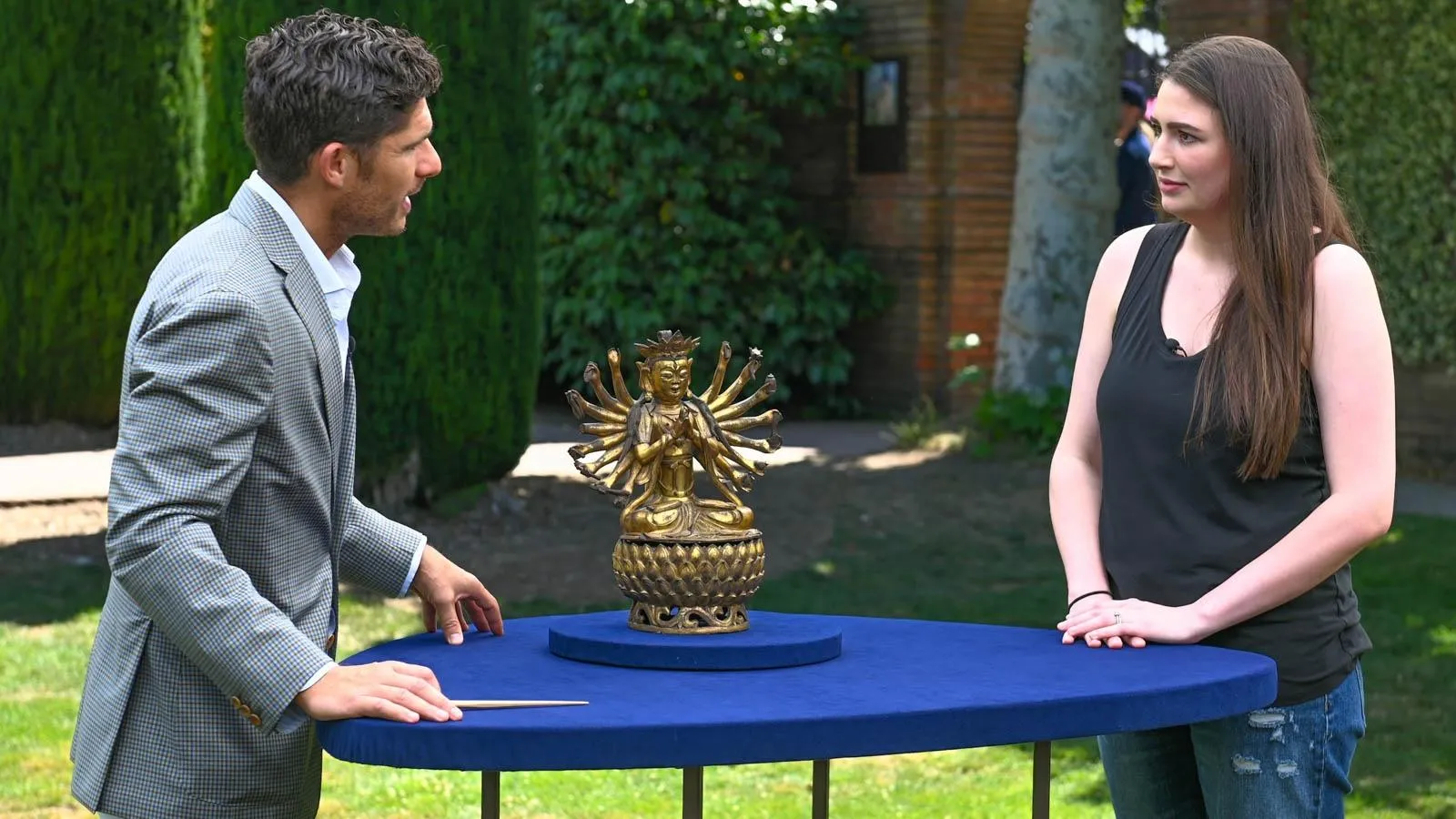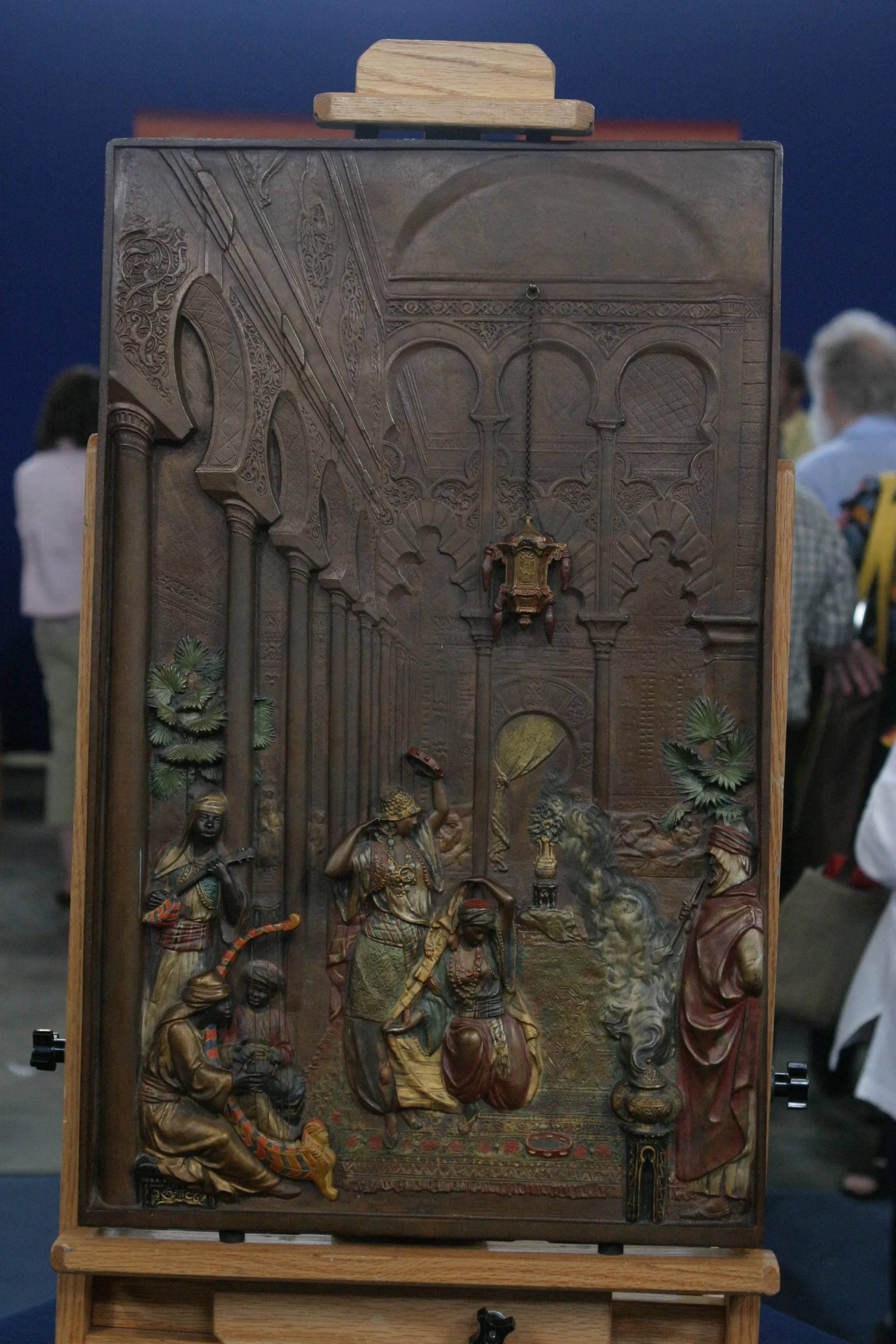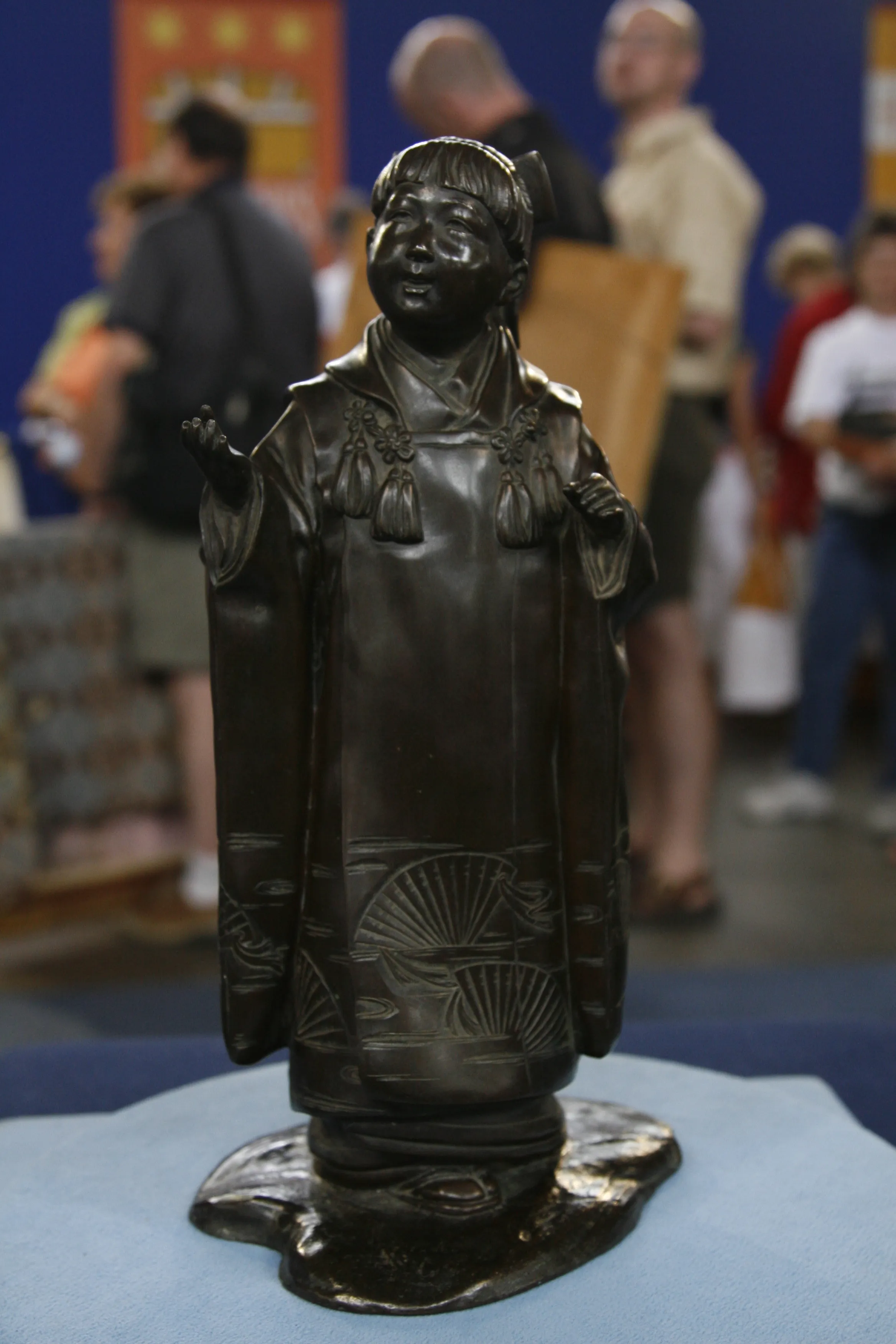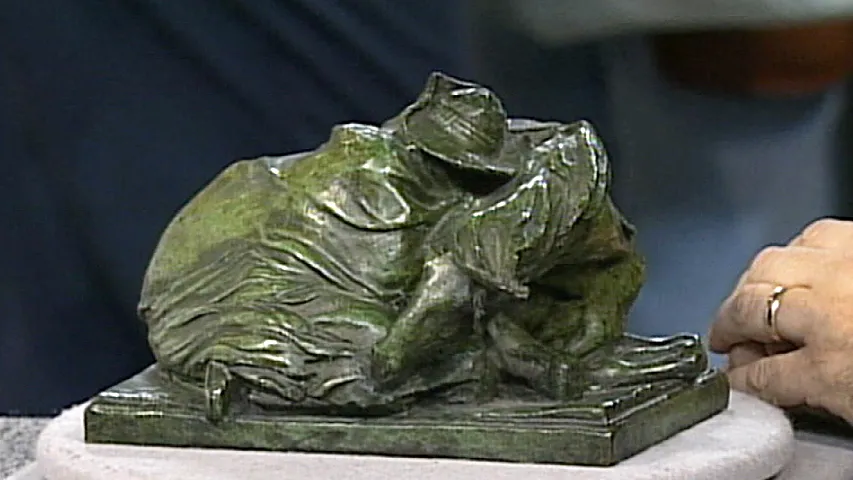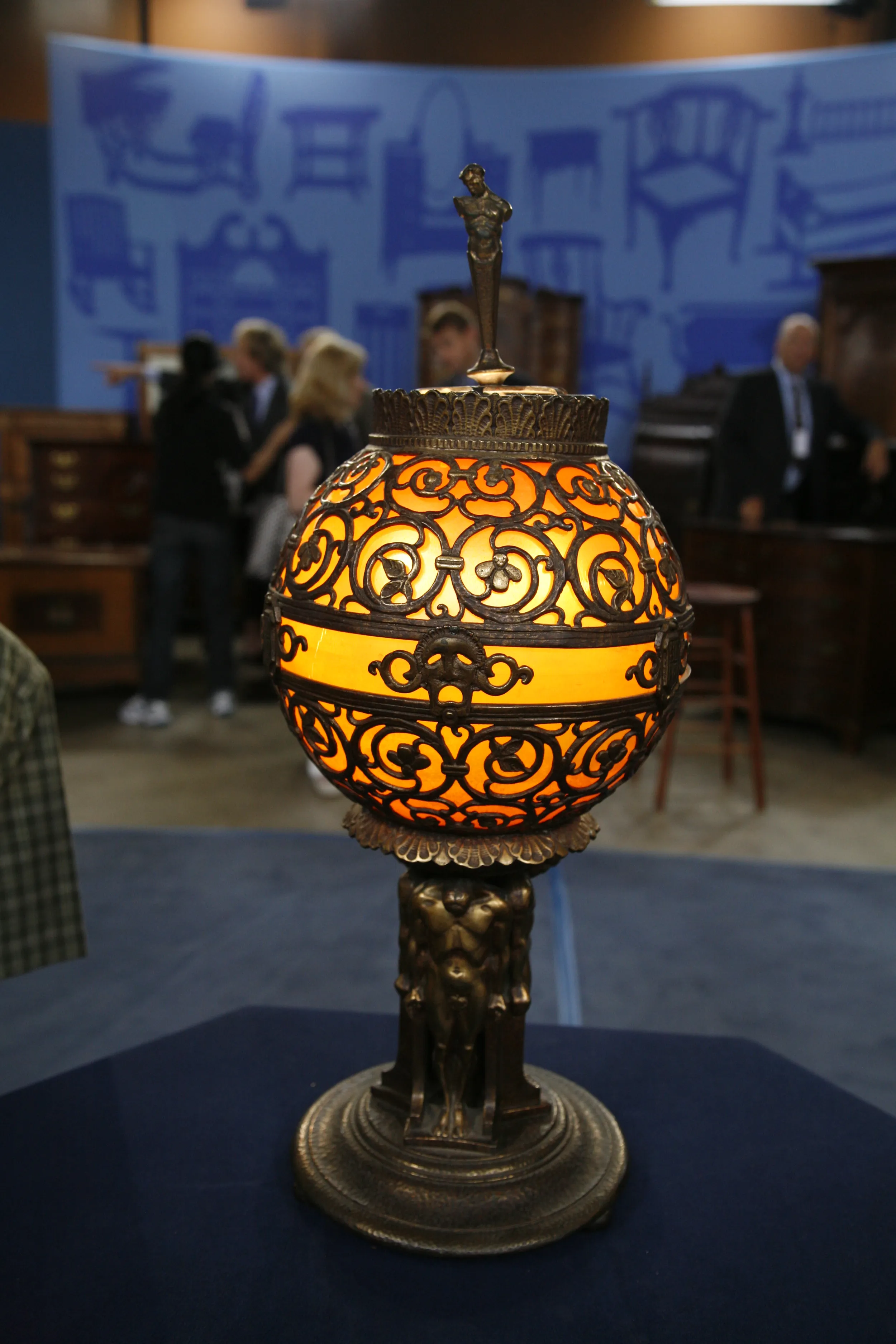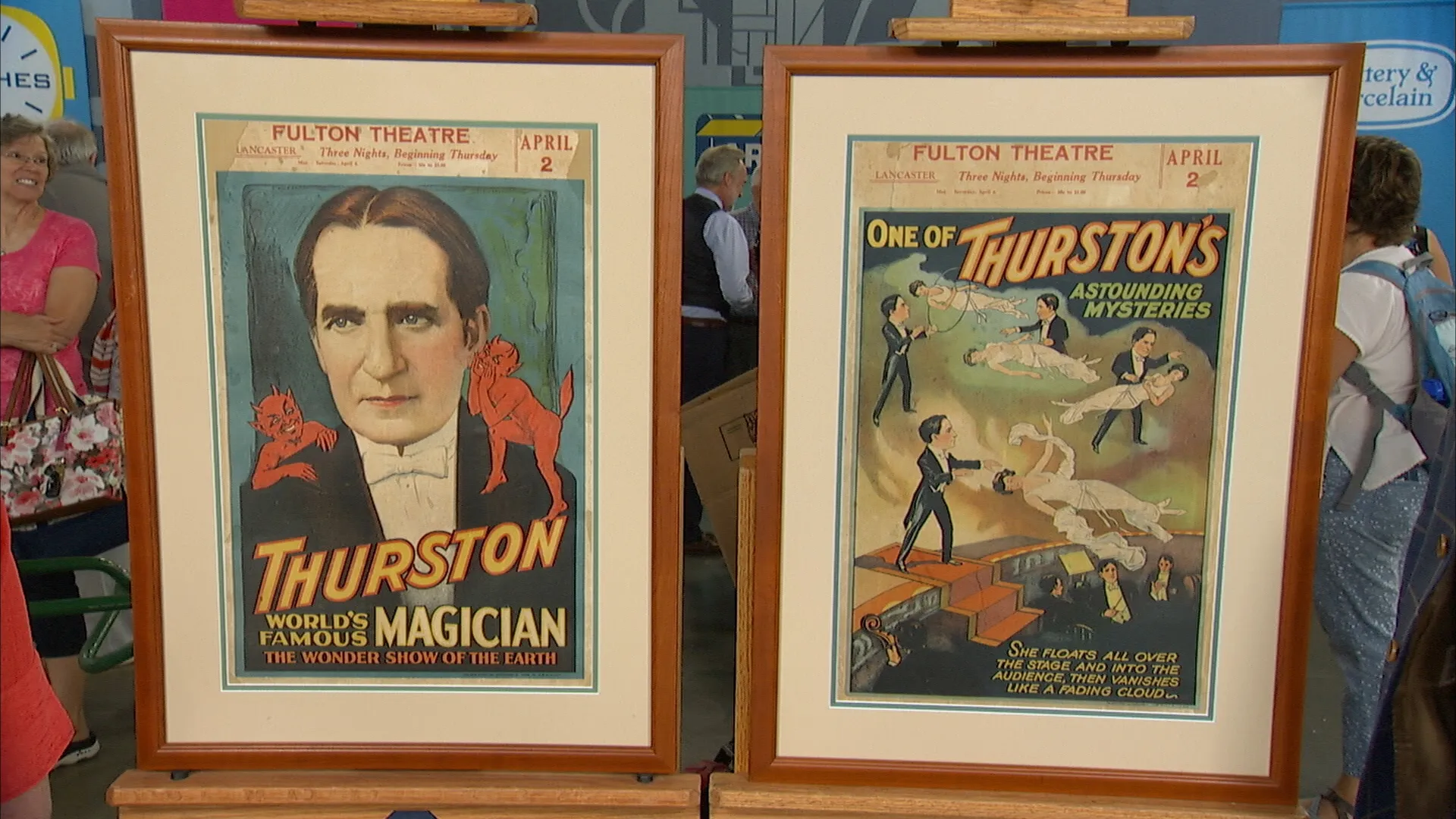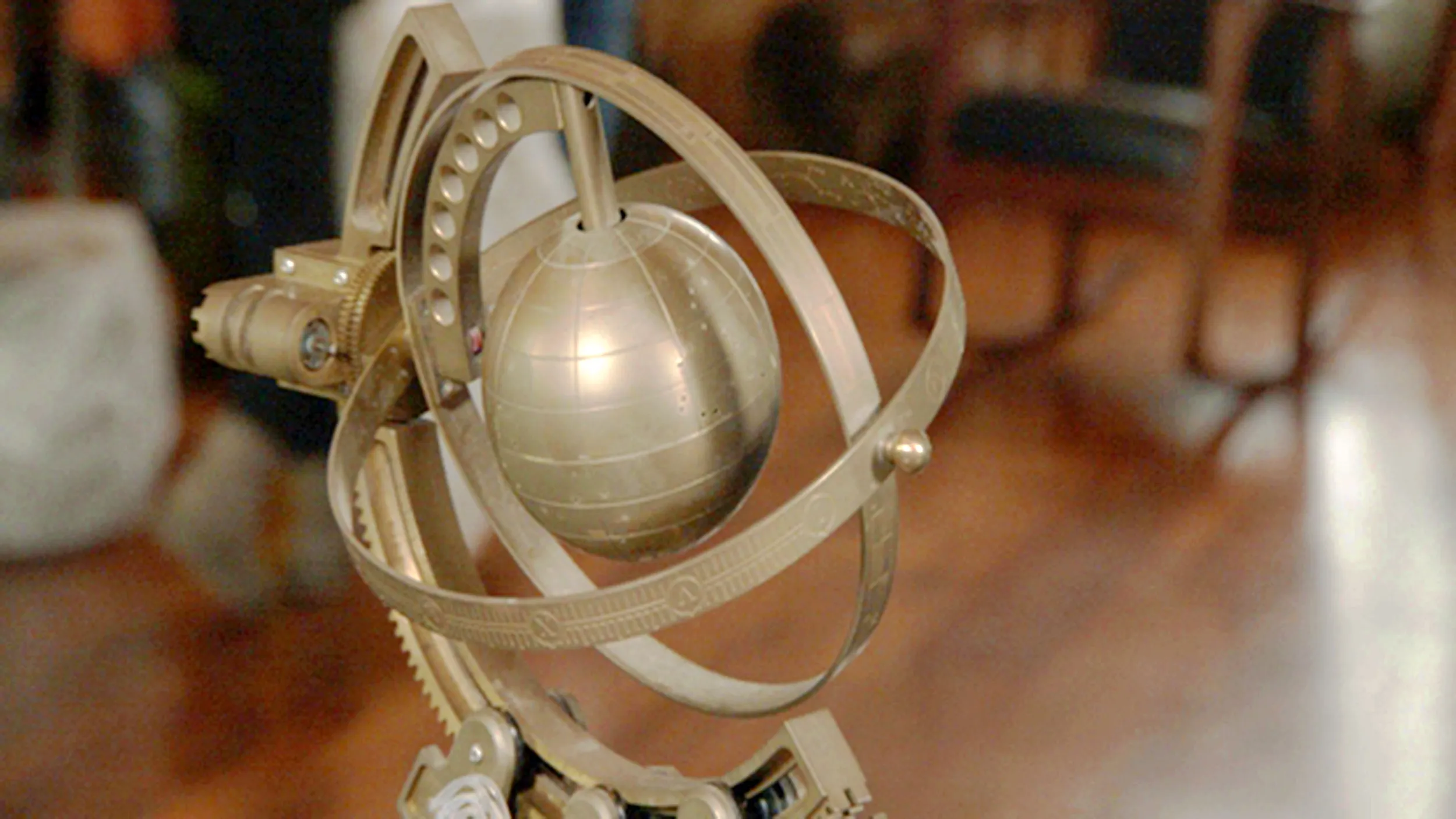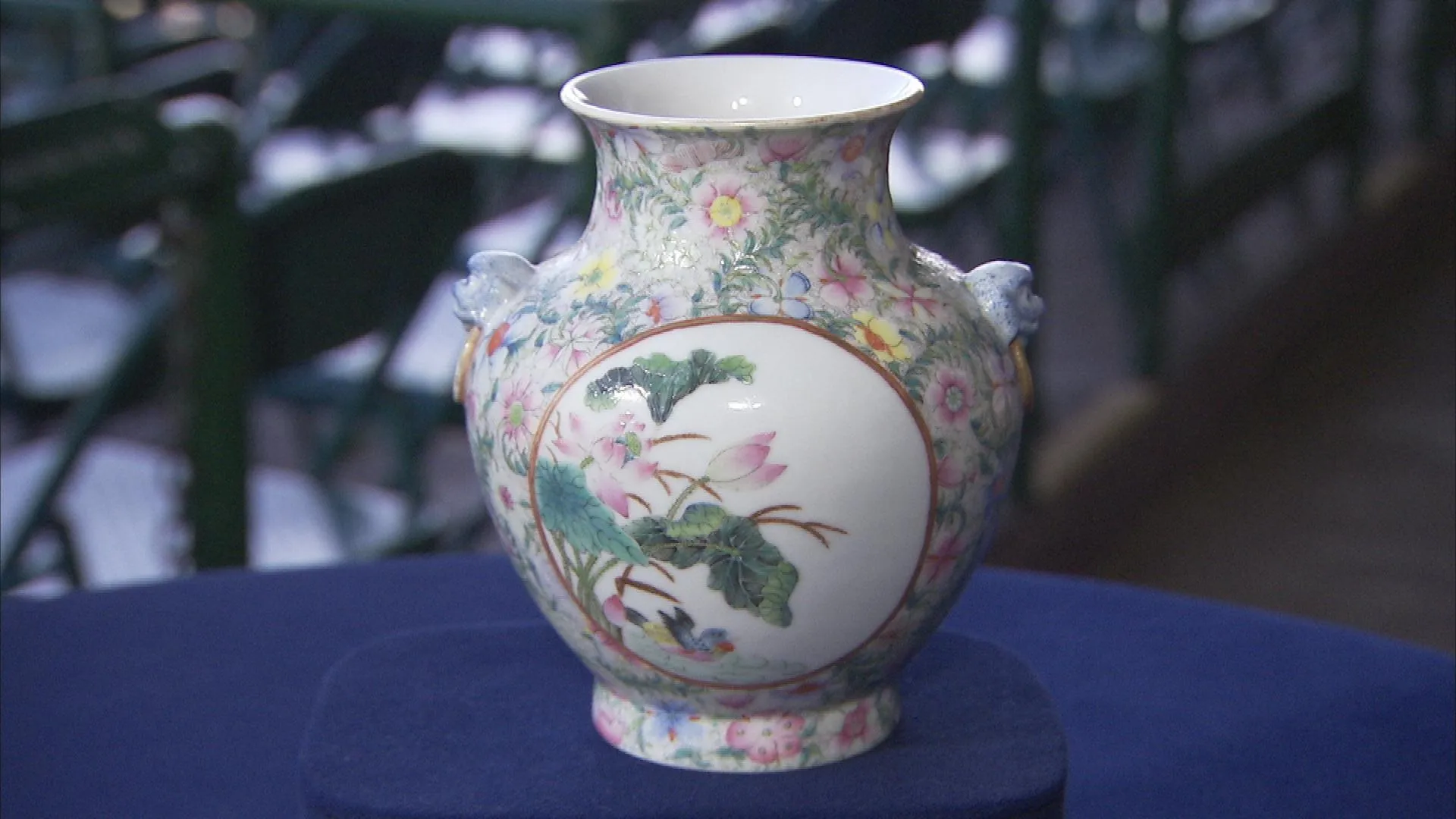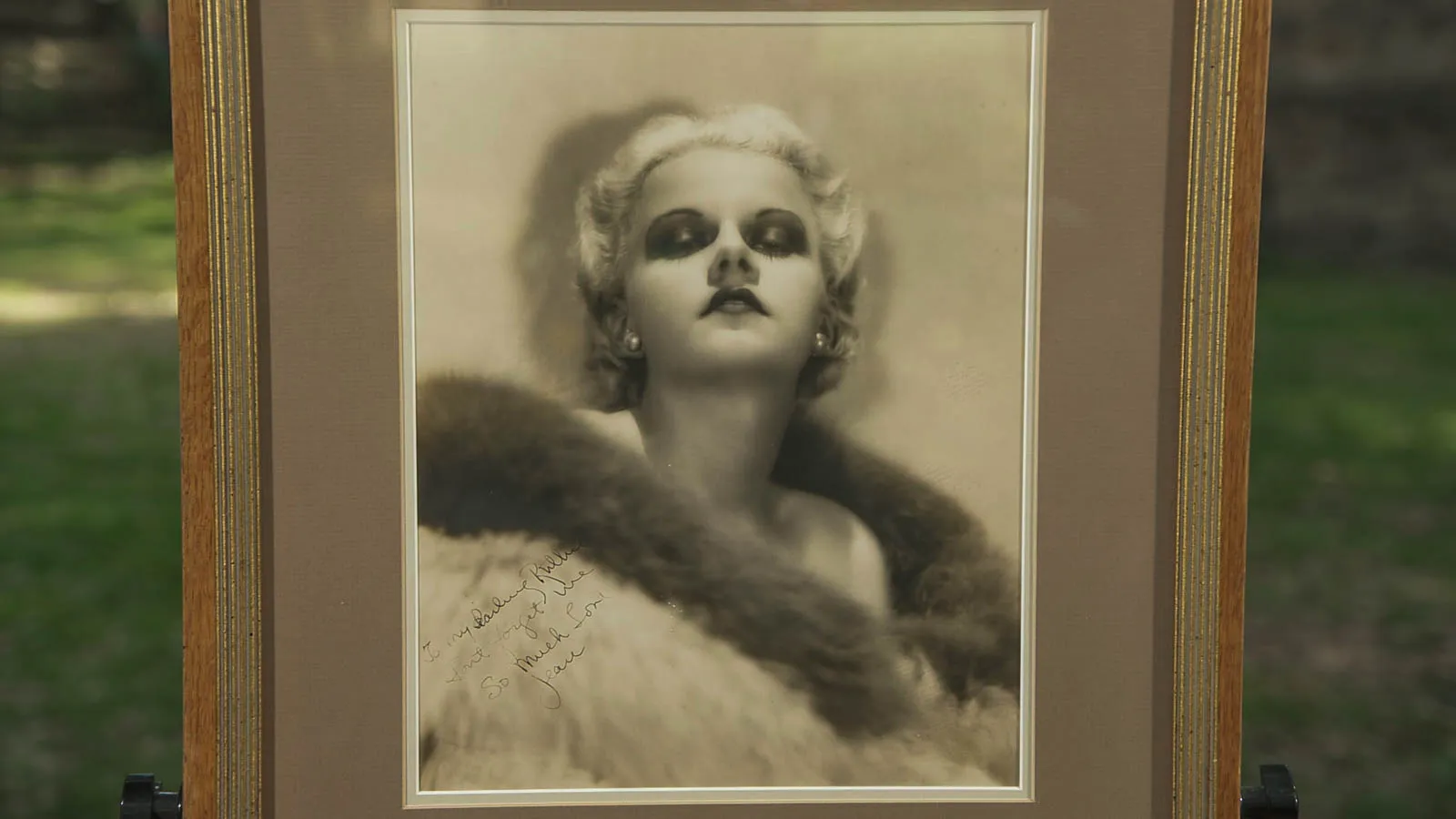GUEST: I got this at a yard sale maybe five or six years ago. I bought it because I thought it looked really old. I think it's, like, a Chinese Buddha.
APPRAISER: Was the yard sale in California, or your neighborhood, or elsewhere?
GUEST: California, yeah.
APPRAISER: And what did you pay?
GUEST: $40.
APPRAISER: You're correct, it's a Chinese Buddha. It's a bodhisattva, it's a diva. It's a female form of Buddha. It is a, uh, an image that was influenced by Tibetan and Nepalese Hindu tantric figures identified as a bodhisattva of light or dawn. She's a multi-armed deity. There are some, some small losses. These are all attributes, and they're mostly Buddhistic symbols. You have a sword here with no blade. You have a hand.
GUEST: Mm-mm.
APPRAISER: An attribute missing from my right.
GUEST: Yup.
APPRAISER: In the whole, they're mostly present. She's seated in a full lotus position...
GUEST: Yes.
APPRAISER: ...a tantric position, with hands in mudra, to the center, in blessing. Did you like the, the image as a decorative work of art? Does it... No?
GUEST: No. I have to admit, no. (laughs) I just thought it looked really old, so it might be something. It's cool, but I wouldn't put it in my house.
APPRAISER: Okay, where does it currently reside?
GUEST: In a box in the garage.
APPRAISER: These are religious objects. These attain merit with worship. These are used by practitioners during worship and meditation...
GUEST: Okay.
APPRAISER: ...for transcendence. So these are often cast to be elevated. They're to be looked at from below. I suspect you think it was worth more than $40 when you bought...
GUEST: I do think it was more than $40, but I couldn't tell you.
APPRAISER: When do you think it may have been made?
GUEST: I want it to be made in, like, the 1600s?
APPRAISER: Oh, good, well, good, uh, assumption, or guess, or...
GUEST: Is it?!
APPRAISER: Yeah, yeah. So made probably about 1650.
GUEST: Oh, wow.
APPRAISER: In China-- this is a late Ming casting. It's gilded bronze.
GUEST: Okay.
APPRAISER: A bronze alloy. It would have been cast by an artisan. These were expensive objects. It was likely not an object middle-class Buddhist practitioners could afford in China. It was an upper-class middle family, and it was probably a stretch then. It's actually nicely cast.
GUEST: Okay.
APPRAISER: You know, if I was to put a numerical, uh, ranking, it's a six or a seven out of ten. So during the 17th century, they were, they were good, but not great.
GUEST: Mm-hmm.
APPRAISER: But this is a better- than-average example.
GUEST: Oh, really?
APPRAISER: And I will just point out the, the lovely Indian lotus to the drapery.
GUEST: Mm-hmm.
APPRAISER: The feet are nicely cast. The expression should impose or transfer transcendence, compassion. In my opinion, this expression does. You'll see remnants of polychrome. So this sea would have been a blue. As I turn this again, the counter-polychrome to the crown would have been an orange. You had a great eye, you bought well.
GUEST: So it's legit.
APPRAISER: It's legit.
GUEST: Wow.
APPRAISER: Yeah. So this is hundreds of years old. 300, 350 years old.
GUEST: Right.
APPRAISER: Often they become separated. Lotus throne, they're separately cast. This is a great base. This is a great figure. They look great together. I'm not certain they were done together. This gap on either side?
GUEST: Uh-huh.
APPRAISER: Usually the fit is a little bit better. I'm certain they were made in the same time frame. I think in an auction setting, a value of $15,000 to $20,000 would be conservative.
GUEST: Okay. Wow. That's awesome.
APPRAISER: And in a retail setting, I would imagine it to carry a value of $30,000.
GUEST: Wow. Okay. Thank you so much.
APPRAISER: Well-bought.
GUEST: (laughing) Yeah, apparently.
APPRAISER: It surprises me that these are still available at yard sales.

